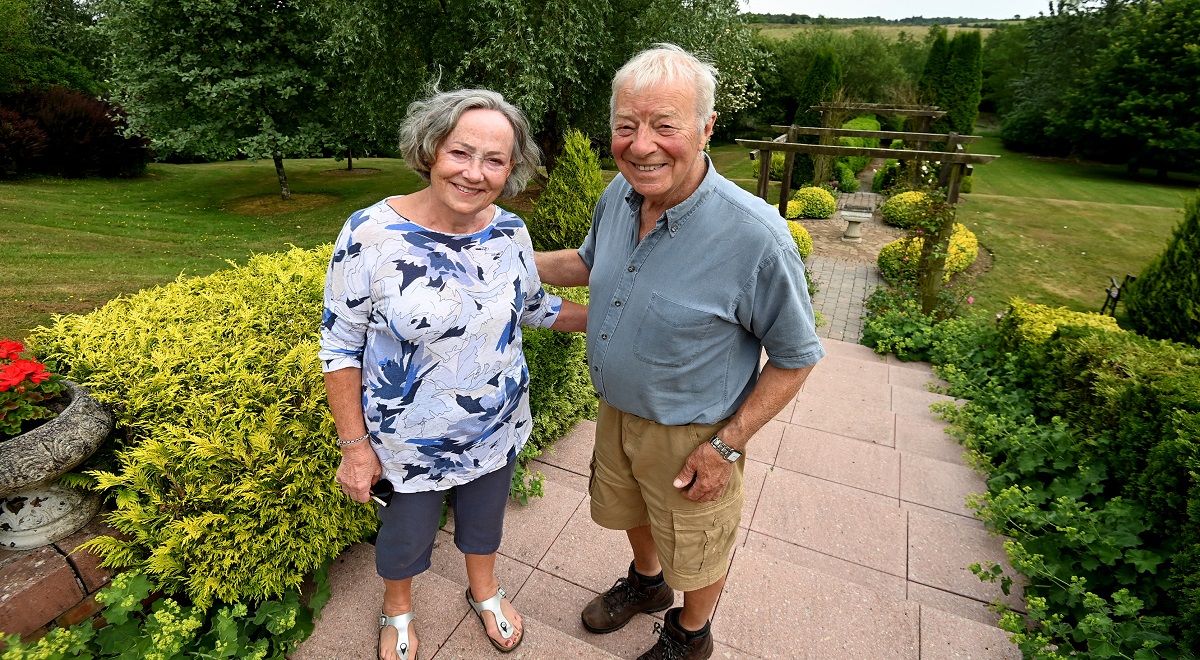Childhood memories are often the measure by which we judge the progress of the world, and assess the arc of our lives.
Returning to the backdrop of our earliest years, we stand and stare; contrasting what was with what is.
We recollect remembered scenes of yesteryear, and hold them up beside the reality of today.
When Rosemary Salisbury returned to Tyrone in 2001 after living in Nottinghamshire for many years with her English husband, Bob, the pair purchased a lump of land that Rosemary once knew well; a few acres of wet bog and woodland between Omagh, Seskinore and Tattyreagh.
As they stood looking over their new acquisition, Rosie (as she is better known to Bob) saw herself as a child, racing through the fields and looking for bird’s nests with her siblings, as a warbling chorus rose into the air.
However, with the heels of their wellies sinking by the second, the vision that played out in Rosie’s mind had little in common with the muck and mire upon which they stood.
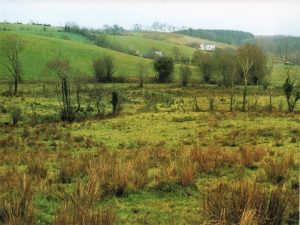
At that moment, the couple swore an ambitious oath; one that for the next two decades would blur the line between pipedream and nightmare.
“We decided we would try to rewind the clock 30 years, and bring the land back to life,” said Bob.
At the end of last week, the couple invited us to join them on a dander through their now 17-acres of old woodland, wildflower meadows, kept gardens, streams, ponds and bogland.
The ‘Field of Dreams’, as it has been nicknamed by their children and grandchildren, is now used as template across Ireland by people who seek to turn their languishing land into wildlife havens.
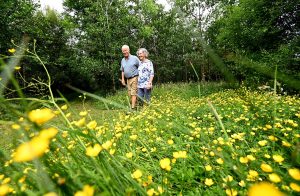
“When we got back here in 2001, all the animals that I remembered from my childhood had fled,” said Rosie, as we walked through a bristling green, high-hedged alley away from the formal gardens surrounding the house.
“The land had been neglected, and there were no more skylarks, grey partridge, curlew, bees or butterflies.”
Sticking to a shaven lane that snaked like a gentle serpent through the grounds, Rosemary explained how Bob’s influence revealed to her the depth of nature’s beauty.
“I had fun here as a child, but I saw little beauty in it,” said Rosemary, slowly turning around, tilting her head back, and looking towards the branches above.
“When we first came here on a holiday, I could not understand why Bob was so blown away by the place.
“I remember thinking, ‘Yeah, he did not grow up here in poverty’.
But, over time, Bob opened Rosemary’s eyes to the beauty that was there all along.
Pointing to a shady bench, she said, “I can guarantee you, if something is bothering you and you sit on that bench for an hour, by the time you get up you won’t even remember what it was.”
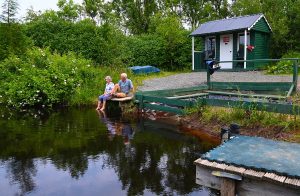
Like music, a garden or landscape has to have an element of mystery to hold your interest.
As you follow the path that meanders through the ‘Field of Dreams’, each corner cloaks what is next to come.
“You want it to surprise and confound, but there is an even bigger reason for creating different types of habitats.
“You need them to attract different species,” said Bob.
Bob and Rosemary have now counted 66 species of birds and 14 mammals.
“Within days of our two ponds filling up, they had attracted hundreds of frogs and newts, followed by herons, buzzards and otters.”
And that was only the start of it.
“Mallard, teal, moorhen and water rail all began to breed on the land, with the occasional dabchick, cormorant or merganser dropping in too.
“Great diving beetles appeared, as did ram-shorn water snails and water boatmen appeared.
“Fieldfares, housemartins and swallows came in droves, charms of goldfinches swirled around the thistles and sparrow hawks hunted.
“Irish hares and barn owls appeared; the first spied in the area for more than 30 years.
“In the last few years, badgers, rabbits, stoats and pine martens have been added to the list.
“To date, we have spotted 66 bird species and 14 mammals, and the surprises keep coming.
“This morning, we had the great pleasure and privilege of observing a greater spotted woodpecker on the bird feeder, and a kingfisher by the lakes!”
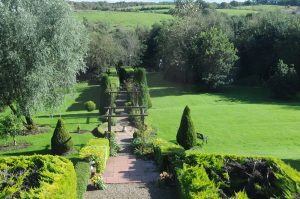
Bob and Rosemary have planted more than 4,500 trees, some of which are over two-feet wide, and whose inhabitants perch in the clouds.
“Look at the size of this tree,” said Bob, pointing to a willow of 18 years.
“I remember someone once telling me that a man who plants a tree never lives to sit under it.”
Tracking the trunk from roots to roof, with a smile, Bob said, “I rest my case.”
Bob encourages people to learn from the ecological miracle of which he and Rosemary have pulled off.
“What our project shows is that our native wildlife is amazingly resilient, if given half a chance,” he remarked, as we came back towards the house.
“Long term, those concerned with conservation need to think big, and act small.
“Think big to try to bring about change to the damaging agricultural policies and practices which are harming our countryside, but think small to create mini-wildlife reserves, which can have an impact immediately.
“There are acres of marginal, unproductive land in Ireland; often small farms that are no longer used for agriculture – these are ideal situations to consider creating a wildlife refuge.
“These small spaces can make a genuine difference for our environment, and, as Rosie and I can say from experience, they can make for an immensely absorbing and satisfying project.”
Just as we thanked the pair for their time, and were ready to bid our goodbyes, the first rain in five weeks began to fall.
“We are probably the only people in Tyrone who are glad to see that arrive,” laughed Bob.
“We are overdue a good thunderstorm.”






